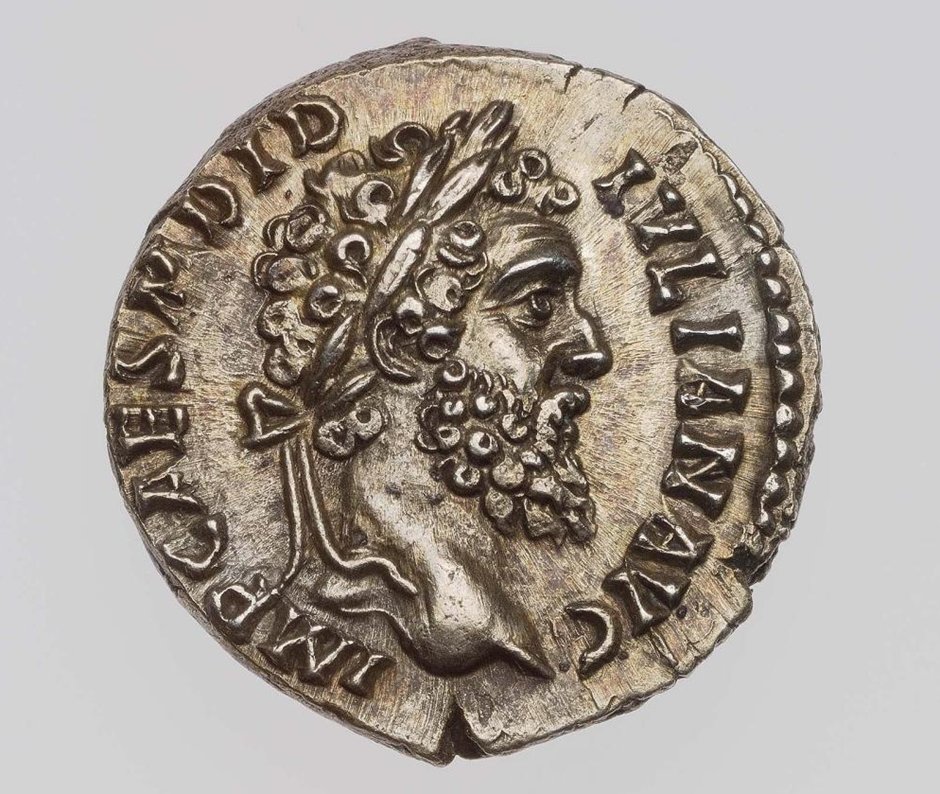Ancient Coin of the Day: Today is about Didius Julianus, the man who bought the position of Emperor from the Praetorian Guard on this day, 28 March, in AD 193. #ACOTD #Numismatics #Rome 🧵
Image: RIC IV Didius Julianus 1; MoFA Boston (1999.514). Link - numismatics.org/ocre/id/ric.4.…

Image: RIC IV Didius Julianus 1; MoFA Boston (1999.514). Link - numismatics.org/ocre/id/ric.4.…


Following their killing of Pertinax on 28 March AD 193, the Praetorian Guard decided to auction off the position of emperor to the highest bidder. Didius Julianus won the day, promising 25,000 sesterces per man (Dio 74.11.5), beginning his brief nine-week reign.
The Obverse of this coin shows a laureate portrait of Didius Julianus, with the Legend IMP CAES M DID IVLIAN AVG – ‘Emperor Caesar Marcus Didius Julianus Augustus’. 

The Reverse of the coin shows Concordia, the personification of harmony, holding a legionary standard. The Legend – CONCORD MILIT – ‘Harmony of the Soldiers’, while suggesting the universal support for Julianus, is somewhat misleading! 

However, that he issued the same message on his aurei is suggestive that Julianus was crystal-clear on the necessity of the army's support in securing his position. However, in this he was to be disappointed!
Image: British Museum (1848,0819.92). Link - britishmuseum.org/collection/obj…
Image: British Museum (1848,0819.92). Link - britishmuseum.org/collection/obj…

The news of Didius Julianus’ accession, and the manner of it, stirred widespread unrest around the empire. Several powerful generals, including Septimius Severus, refused to accept him as emperor instead declaring themselves for the position.
In the face of these widespread uprisings, Julianus attempted to galvanise public support by reiterating the ‘legitimacy’ of his position on his coinage.
Image: RIC IV Didius Julianus 2b; British Museum (R.12642). Link - numismatics.org/ocre/id/ric.4.…
Image: RIC IV Didius Julianus 2b; British Museum (R.12642). Link - numismatics.org/ocre/id/ric.4.…

Thus on the Reverse of this aureus we see the raft of imperial titles – P M TR P COS, ‘Pontifex Maximus, with Tribunician Power, Consul’ – surrounding the figure of Fortuna, who holds a rudder set on globe in her right hand and a cornucopia in her left. 

Similarly, designs that celebrated his wife – Manlia Scantilla – were very common, often with a Reverse design of Juno with her peacock.
Image: RIC IV Didius Julianus 18A; Münzkabinett Wien (RÖ 14003). Link - numismatics.org/ocre/id/ric.4.…

Image: RIC IV Didius Julianus 18A; Münzkabinett Wien (RÖ 14003). Link - numismatics.org/ocre/id/ric.4.…


The rapid production of such coins was necessary in order to be able to pay his bribe (if we’re being kind, we could still call it the donative) to the Praetorians, as well as to try to generate goodwill and legitimacy.
However, given the proclamation of Septimius Severus as emperor by the Pannonian legions on 9 April, a mere 12 days into Julianus' reign, the political situation was too unstable. Notably this event detracts even further from Julianus' claims of 'Harmony of the Soldiers'.
For a re-assessment of the accession of Julianus, see:
Appelbaum, Alan. “Another Look at the Assassination of Pertinax and the Accession of Julianus.” Classical Philology 102, no. 2 (2007): 198–207.
doi.org/10.1086/523738
#ACOTD #Numismatics #Rome 🧵
Appelbaum, Alan. “Another Look at the Assassination of Pertinax and the Accession of Julianus.” Classical Philology 102, no. 2 (2007): 198–207.
doi.org/10.1086/523738
#ACOTD #Numismatics #Rome 🧵
• • •
Missing some Tweet in this thread? You can try to
force a refresh












